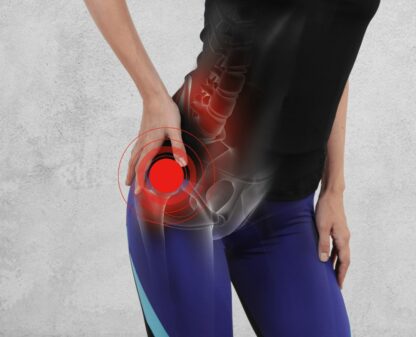Exercises Generating Highest Gluteal Muscle Activity

Introduction
Optimal gluteal muscle function is important as dysfunction is associated with pain at the ankle, knee, hip and lower back. One may think “a little gluteal strengthening a day may keep those symptoms away”. But which exercises for gluteal strengthening to use and how do we progress load? This systematic review summarized the muscular activation of the gluteus medius and minimus through a different range of exercises.
Methods
A systematic review with meta-analysis was conducted according to the PRISMA guidelines. Studies measuring healthy participants through intramuscular or surface EMG were included. The EMG had to be converted to a maximal voluntary isometric contraction (MVIC) as this was previously found to be the most reliable method to compare muscle activity. The levels of muscle activation were determined as follows:
- Low muscle activation: 0-20% MVIC
- Moderate muscle activation: 21-40% MVIC
- High muscle activation: 41-60% MVIC
- Very high muscle activation: >60% MVIC
Results
Exercises for gluteal strengthening
Exercises that create low activity in the gluteus medius:
- Side lying clam
- Double leg bridge

Exercises that create moderate activity in the gluteus medius:
- Side lying hip abduction
- Side lying hip abduction with external rotation
- Squat
- Single leg squat
- Squat with resisted abduction
- Forward step up
- Forward lunge
- Side lunge
- Rear-foot elevated lunge (moderate to very high activation but this result came from only 1 study, thus cautious interpretation is required)

Exercises that create high activity in the gluteus medius:
- Side lying hip abduction with internal rotation
- Standing hip abduction with external resistance (open chain)
- Lateral step up
- Hip hitch/pelvic drop
- Standing hip abduction (stance leg)
- Single leg bridge

Talk nerdy to me
To minimize fatigue most studies randomized the exercises and used a restricted number of trials. Participants were allowed to rest between exercises. Therefore we believe fatigue did not interfere with the obtained results. The use of surface EMG in most of the included studies may be subject to artefacts of overlying tissue and movement. However, as it is a non-invasive measurement method, these results may more closely resemble clinical practice than in case invasive methods and very strict protocols would have been used.
Activity in the gluteus minimus muscle was also examined, however, since all but one of these results came from non-pooled analyses, we decided not to include them in this research review and to focus on the results from the pooled analyses. Large variations in the exercises did exist and mostly comprised exercise technique, positioning, number of repetitions, and the addition of external resistance. Yet, study results were mostly unanimous, which makes us believe that this division into increasing load is an adequate representation of reality.
Take home messages
Interestingly, this study only included a range of exercises that can be done without the need for special equipment. Therefore these exercises and progressions can be easily implemented in clinical practice and may be scheduled in for example home work-out programs. These progressions can be used in the acute injury phase or after surgery to gradually increase or decrease load demands. In case patients aren’t allowed to bear weight for example, the non-weight bearing exercises can be progressed from low to high activation until weight bearing is allowed.
Reference
Moore D, Semciw AI, et al. A SYSTEMATIC REVIEW AND META-ANALYSIS OF COMMON THERAPEUTIC EXERCISES THAT GENERATE HIGHEST MUSCLE ACTIVITY IN THE GLUTEUS MEDIUS AND GLUTEUS MINIMUS SEGMENTS. Int J Sports Phys Ther. 2020 Dec;15(6):856-881. doi: 10.26603/ijspt20200856. https://pubmed.ncbi.nlm.nih.gov/33344003/
LEVEL UP YOUR DIFFERENTIAL DIAGNOSIS IN RUNNING RELATED HIP PAIN - FOR FREE!
Don’t run the risk of missing out on potential red flags or ending up treating runners based on a wrong diagnosis! This webinar will prevent you to commit the same mistakes many therapists fall victim to!



